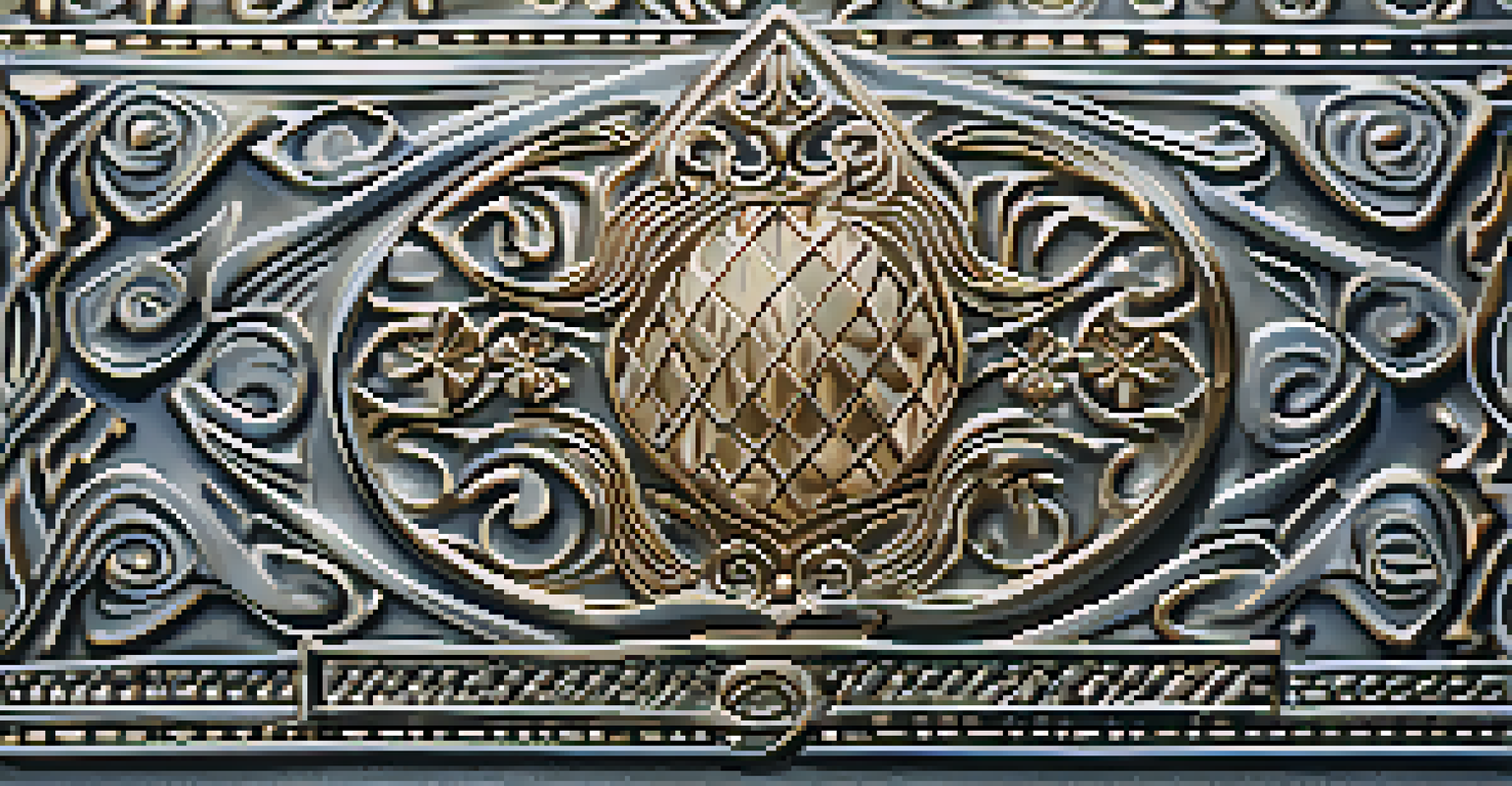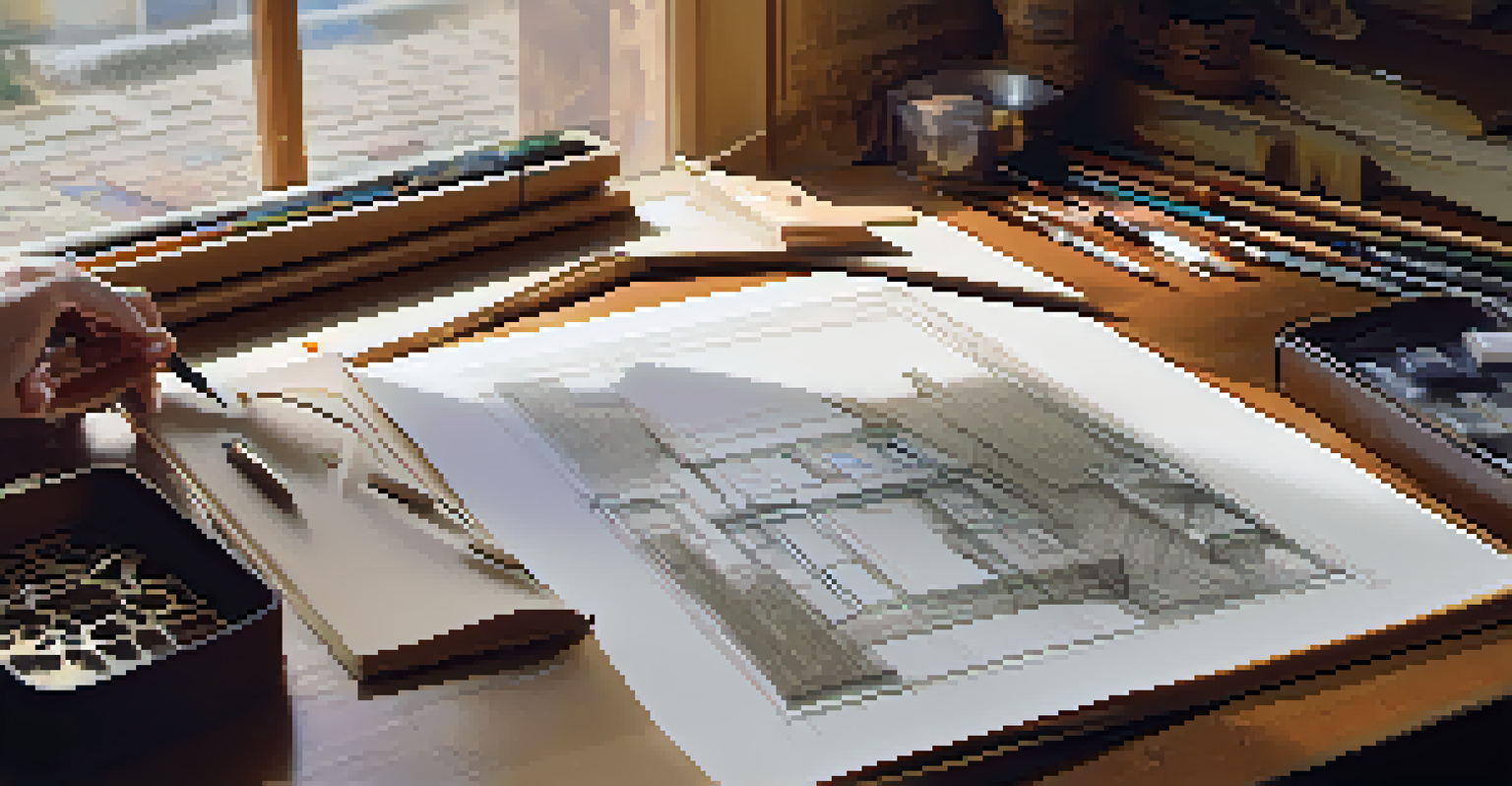Techniques in Carving: Mastering the Art of Jewelry Design

Understanding the Basics of Jewelry Carving Techniques
Jewelry carving is a captivating art form that combines creativity with precision. At its core, it involves shaping materials like metal, wax, and stone to create exquisite designs. By understanding the foundational techniques, artists can transform their ideas into tangible pieces that reflect their unique style.
Every artist was first an amateur.
Beginners often start with softer materials, such as wax, which allows for easier manipulation. Wax carving is especially popular because it enables designers to create intricate details without the immediate commitment of harder materials. Once comfortable with wax, artists can transition to metals and stones, broadening their horizons.
As you delve deeper into jewelry carving, you'll find that mastering the basics opens doors to advanced techniques. This foundational knowledge not only enhances your skill set but also boosts your confidence in experimenting with complex designs and styles.
Essential Tools for Jewelry Carving Mastery
Having the right tools is crucial for any jewelry carving project. Essential tools include carving knives, files, and chisels, each designed for specific tasks. A well-equipped workspace can make a significant difference in the quality of your work and the ease of the carving process.

For instance, a sharp carving knife allows for clean cuts and intricate details, while files help refine the surface and edges. Investing in high-quality tools not only improves your results but also enhances your enjoyment of the craft. Remember, the tools you choose are extensions of your creativity.
Master the Basics of Jewelry Carving
Understanding foundational techniques empowers artists to create unique designs and boosts confidence in their craft.
As you grow in your jewelry design journey, consider expanding your toolbox with specialized instruments. This could include rotary tools for more complex designs or polishing machines to give your pieces a professional finish. Each tool adds a new dimension to your creativity, enabling you to explore a variety of carving techniques.
Exploring Different Carving Techniques in Jewelry Design
There are several carving techniques to explore in jewelry design, each offering unique results. Techniques like relief carving, intaglio, and stone inlay allow artists to create depth and texture in their pieces. Understanding these techniques can help you determine which best suits your artistic vision.
The details are not the details. They make the design.
Relief carving involves creating a raised design on a flat surface, ideal for showcasing intricate patterns. In contrast, intaglio carving is the opposite; it creates designs that are recessed into the material. Both techniques can be beautifully executed, depending on the desired effect.
Stone inlay, on the other hand, incorporates different materials to create stunning contrasts and colors. By mixing techniques, artists can craft one-of-a-kind pieces that tell a story through their design. Embracing these diverse approaches can elevate your jewelry to an art form.
The Importance of Design Planning in Jewelry Carving
Before diving into carving, effective design planning is essential. Sketching your ideas helps visualize the final product and allows for adjustments before committing to the material. This thoughtful approach can save time and resources while ensuring a well-executed piece.
Creating a detailed plan involves considering dimensions, materials, and techniques. This process also encourages you to think critically about your design, fostering creativity and innovation. A solid plan can guide you through the carving process, making it feel less daunting.
Essential Tools Enhance Your Craft
Investing in high-quality tools not only improves your results but also makes the carving process more enjoyable.
Moreover, having a clear design plan can help you anticipate challenges that may arise during the carving process. By preparing for these obstacles, you can maintain your momentum and confidence, ensuring a smoother journey from concept to completion.
Tips for Achieving Precision in Jewelry Carving
Precision is key in jewelry carving, as even the smallest error can impact the final piece. One effective tip is to work slowly and methodically, allowing yourself to focus on each detail. Patience is vital, especially when tackling intricate designs that require a steady hand.
Using guides or templates can also enhance precision, particularly for geometric shapes. These tools ensure consistency in your work, making it easier to replicate designs and achieve a polished look. As you gain experience, you'll develop your own techniques for maintaining accuracy.
Additionally, taking breaks during long carving sessions can help prevent fatigue. A fresh perspective can lead to improved focus and more precise results. Remember, carving is not just about speed but about creating a masterpiece that reflects your artistic vision.
Incorporating Texture and Detail in Your Designs
Adding texture and detail to your jewelry pieces can elevate them from ordinary to extraordinary. Techniques like stippling, burnishing, and engraving create visual interest and depth. These elements can transform a simple design into a captivating work of art.
Stippling, for example, involves creating small dots on the surface, adding a subtle texture that catches the light beautifully. Burnishing smooths out surfaces, giving pieces a polished finish that enhances their overall appearance. Engraving allows for even more customization, letting you inscribe personal messages or intricate patterns.
Design Planning is Crucial
Effective design planning helps visualize the final product and prepares artists for challenges during the carving process.
Experimenting with various textures can also help you develop a signature style. Each technique offers endless possibilities for creativity, allowing you to express your artistic vision in unique ways. Don't be afraid to push the boundaries and explore how different textures can tell your design's story.
Finishing Techniques: Polishing Your Jewelry Masterpieces
Once your carving is complete, finishing techniques play a crucial role in the final presentation of your jewelry. Polishing, for instance, brings out the brilliance of the materials used, enhancing the overall aesthetic appeal. A well-finished piece not only looks professional but also reflects the care and craftsmanship behind it.
There are many ways to polish your jewelry, including using polishing cloths, compounds, or machines. Each method provides different levels of shine and can be used depending on the material. Experimenting with these techniques can help you discover what works best for your style and preferences.

Remember, the finishing touches can make all the difference in how your work is perceived. A beautifully polished piece can captivate potential buyers or admirers, showcasing your dedication to quality and artistry. In the world of jewelry carving, it's often the details that leave a lasting impression.